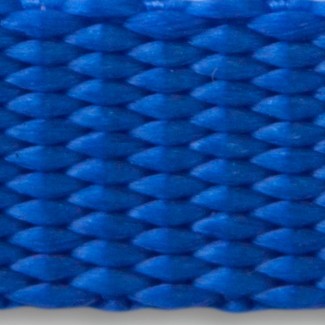- Local: (516) 346-4636
- Toll-Free: (800) 886-6060
- Fax: (516) 346-4366
- Email: kflynn@nationalwebbing.com
 Nylon webbing is a durable, lightweight material commonly used in various applications, including luggage, backpacks, belts, and harnesses. It is made from nylon fibers, synthetic polymers with various properties that make them suitable for webbing production. Here is a step-by-step explanation of how nylon webbing is made:
Nylon webbing is a durable, lightweight material commonly used in various applications, including luggage, backpacks, belts, and harnesses. It is made from nylon fibers, synthetic polymers with various properties that make them suitable for webbing production. Here is a step-by-step explanation of how nylon webbing is made:
1. Nylon polymer production: The first step in making nylon webbing is to produce the nylon polymer, the raw material used to make the webbing. This is typically done through polymerization, which involves reacting monomers (small molecules) to form long chains of polymers.
2. Spinning: Once the nylon polymer has been produced, it is melted and extruded through small holes to form thin, continuous filaments. These filaments are then cooled and stretched to increase their strength and stability.
3. Drawing: The stretched filaments are then drawn through a series of heated rollers, strengthening, and stabilizing the fibers. This process is known as drawing.
4. Texturizing: The fibers may be texturized, or given a textured surface, to increase their flexibility and softness. This is typically done through air jet texturizing, in which the fibers pass through a high-pressure air jet.
5. Weaving: The texturized fibers are then woven into webbing using various weaving techniques, such as plain weave, satin weave, or twill weave. The webbing is typically woven on a loom, interlacing the fibers to create the desired pattern.
6. Finishing: Once the webbing has been woven, it is subjected to a series of finishing processes to improve its appearance and performance. This may include dyeing, heat-setting, or coating the webbing with a protective finish.
7. Quality control: Finally, the webbing is inspected and evaluated to ensure it meets the required quality standards. Any webbing that does not meet these standards is discarded, while the rest is rolled up and packaged for distribution.
In summary, nylon webbing is made through a series of steps that involve producing the nylon polymer, spinning, and drawing the fibers, texturizing them, weaving them into the webbing, and finishing and assessing the webbing to ensure that it meets the required quality standards.
Here are some common uses for nylon webbing:
· Luggage: Webbing is often used to make luggage straps, handles, other luggage components, and travel bags.
· Backpacks: Webbing is commonly used in the construction of backpacks, particularly for shoulder straps and other load-bearing components.
· Belts: Webbing is often used to make belts, particularly those used for outdoor or tactical applications.
· Harnesses: Webbing is a popular material for making harnesses, particularly those used for safety or rescue applications.
· Seating: Webbing is sometimes used to construct seats, particularly for outdoor furniture such as lawn chairs and hammocks.
· Tents: Nylon webbing is commonly used to construct tents, particularly for the guy lines and other support components.
· Slings: Webbing is often used to make slings and other load-bearing straps.
· Climbing gear: Webbing is a popular material for making climbing gear, including harnesses, slings, and carabiners.
· Military and tactical gear: Webbing is often used in constructing military and tactical gear, such as load-bearing vests and belts, as well as pack and bag components.
· Medical equipment: Webbing is sometimes used to construct medical equipment, such as backboards and stretchers.